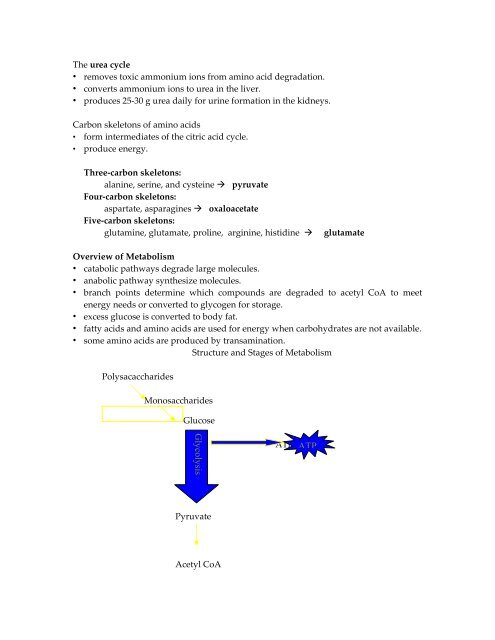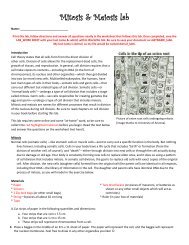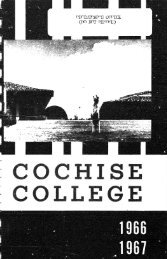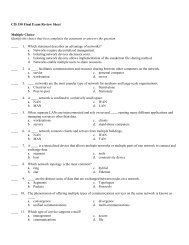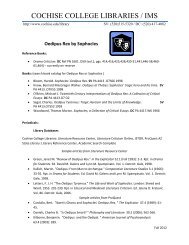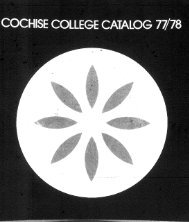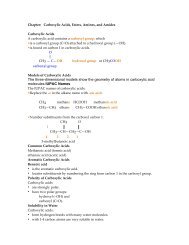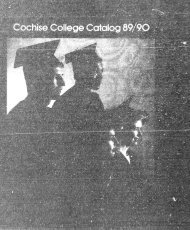You also want an ePaper? Increase the reach of your titles
YUMPU automatically turns print PDFs into web optimized ePapers that Google loves.
The urea cycle• removes toxic ammonium ions from amino acid degradation.• converts ammonium ions to urea in the liver.• produces 25‐30 g urea daily for urine formation in the kidneys.Carbon skeletons of amino <strong>acids</strong>• form intermediates of the citric acid cycle.• produce energy.Three‐carbon skeletons:alanine, serine, and cysteine pyruvateFour‐carbon skeletons:aspartate, asparagines oxaloacetateFive‐carbon skeletons:glutamine, glutamate, proline, arginine, histidine glutamateOverview of Metabolism• catabolic pathways degrade large molecules.• anabolic pathway synthesize molecules.• branch points determine which compounds are degraded to acetyl CoA to meetenergy needs or converted to glycogen for storage.• excess glucose is converted to body fat.• fatty <strong>acids</strong> and amino <strong>acids</strong> are used for energy when carbohydrates are not available.• some amino <strong>acids</strong> are produced by transamination.Structure and Stages of MetabolismPolysacaccharidesMonosaccharidesGlucoseGlycolysisATPATPPyruvateAcetyl CoA


